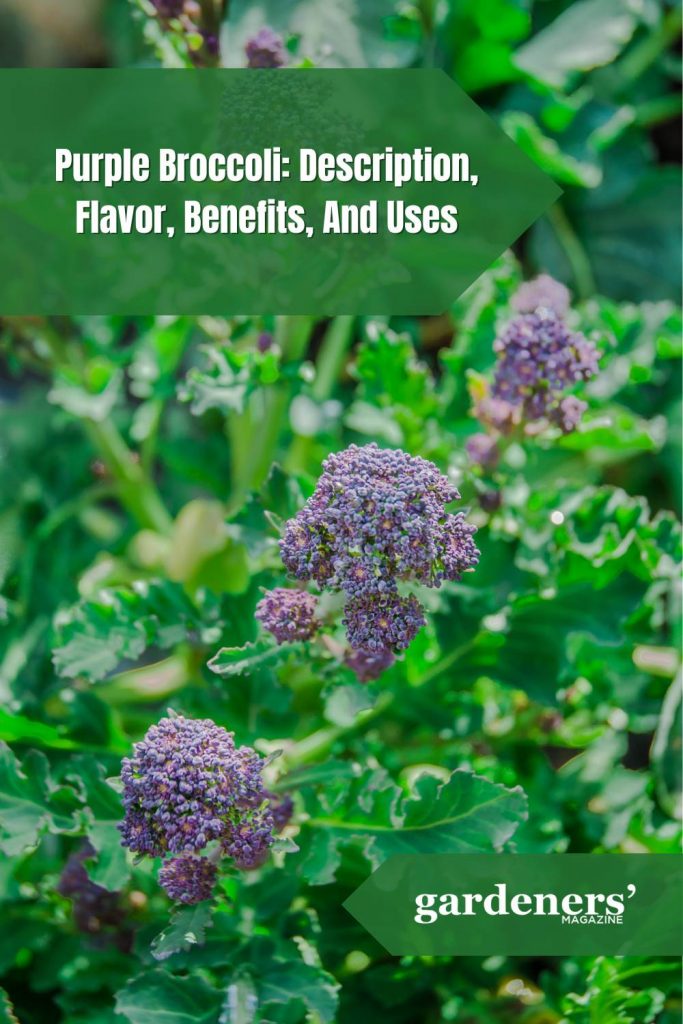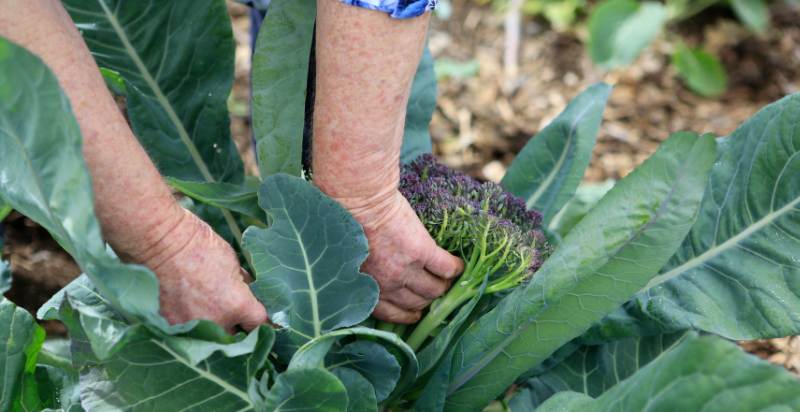Purple broccoli is an increasingly popular vegetable in grocery stores and farmer’s markets worldwide. It has a unique color, flavor, and texture compared to traditional broccoli, making it a great addition to any meal. In this article, we’ll give you all the information you need to know about purple broccoli – its nutrition facts, how it’s grown, and some delicious recipes.
What is Purple Broccoli?
Purple broccoli is a hybrid of traditional broccoli and kale. It has an intense dark purple hue, which makes it stand out among other vegetables. Its flavor is earthy yet sweet, with notes of nuttiness that blend well with other ingredients. Its texture is crunchy on the outside but tender on the inside when cooked correctly.

History and Origin of Purple Broccoli:
The origin of purple broccoli dates back to 2000 BC, when the first mention of it appeared in an ancient Roman agricultural document. Italian farmers developed this type of broccoli, which has been grown and harvested for centuries. The purple variety is a relatively recent addition to the Brassica oleracea family, including cauliflower, brussels sprouts, and kale.
The purple variety was created by crossing two varieties of traditional broccoli plants – the green Calabrese and Purple Sprouting varieties. These two were then cross-bred to produce a plant that offered both the nutty taste of the Calabrese and the color of the Purple Sprouting plant.
As a result of this hybridization process, purple broccoli has a unique flavor and an intense dark color that sets it apart from other green varieties. The deep hue of this type of broccoli is due to its higher anthocyanin content than regular broccoli, which makes it particularly healthy for consumption.
Appearance of the Purple Broccoli:
Purple broccoli has a unique appearance compared to regular green broccoli. It is deep purple with bright, colorful florets slightly more compact than traditional broccoli. The heads of the Purple broccoli are quite large and have tightly packed buds that extend from the top. Its leaves are also darker in hue, and its stems are thicker than normal broccoli. It differs from others because of its crunchy texture and mild nutty flavor.
Flavor Profile of Purple Broccoli:
The flavor of Purple broccoli is mild and sweet, similar to traditional white or green broccoli. Unlike other types of vegetables, the sweetness in Purple broccoli comes from its natural sugars instead of added sugar. It has a slightly nutty taste and a smooth texture when cooked. The stems are crunchy but tender, while the florets are sweet and juicy. Purple broccoli pairs well with ingredients like garlic, herbs, cheese, nuts, and citrus for an interesting flavor profile.
Plant Characteristics of the Purple Broccoli:
Purple broccoli is a unique species of vegetable due to its distinct characteristics. It has long, slender stems with dark purple buds, usually 1 to 3 inches in diameter. The leaves are typically bright green, and the plant can reach up to 5 feet tall. It produces an abundance of small, edible florets and is best harvested when they are still firm and purple. Purple broccoli is highly tolerant of cold temperatures and can survive light frosts.
Health Benefits of Purple Broccoli:
The health benefits of purple broccoli are well established. It is a high source of antioxidants, such as carotenoids and flavonoids like anthocyanins, which can aid in preventing cell damage from free radicals. According to research, consuming purple broccoli may lower your risk of developing some cancers, such as breast and colon cancer.
Where is Purple Broccoli Grown and Harvested?
Purple broccoli is mostly grown in the Mediterranean region and parts of Europe. It is harvested in late summer and early fall when the florets are still firm and purple. In some areas, it can even be harvested as late as early winter when there is no danger of frost. Once harvested, it should be stored in a cool place to preserve its freshness and nutritional value.

Where can the Best Quality Purple Broccoli be found?
You can find the best quality purple broccoli at farmers’ markets or health food stores. Look for heads of broccoli that are dark purple and firm. The stems should also be bright green and not yellow. You can also grow your own from organic seeds if you can access a garden.
How to Use Purple Broccoli?
Purple broccoli is an excellent addition to any meal. The vegetable has a mild, nutty flavor and lends itself well to being cooked in a variety of ways. Here are some ideas for how to use purple broccoli in your meals:
- Steam or boil the broccoli and top with olive oil, garlic, salt, pepper, and Parmesan cheese for a delicious side dish.
- Add it to stir-fry dishes with other vegetables like onions, bell peppers, mushrooms, and carrots.
- Puree cooked purple broccoli into a creamy soup with other vegetables like potatoes, squash, or cauliflower.
- Blend cooked purple broccoli into smoothies to add an extra nutritious punch.
These are just a few of the ways you can enjoy purple broccoli. Try adding it to your meals and see how much you like it!
Storage Tips for Purple Broccoli:
The refrigerator is the best place to keep purple broccoli for up to five days when it is kept in an airtight container. Before storing, ensure the broccoli is dry, then wrap it firmly in plastic or aluminum foil to extend its shelf life. Broccoli can be frozen for up to three months in an airtight bag.
Conclusion:
Purple broccoli is a colorful vegetable that can be a wonderful complement to any meal. It is a great alternative for individuals seeking a healthy and tasty option because it includes twice as many antioxidants as conventional broccoli. Purple broccoli can quickly become a mainstay in your kitchen because of its mild flavor and adaptability. When properly stored, it can be frozen for up to three months or kept fresh in the fridge for up to five days. Enjoy!
- Water Berries: Description, Flavor, Benefits, And Uses - June 18, 2024
- Everything You Wanted To Know About Sweetheart Cherries - June 17, 2024
- Indian Jujube: Description, Flavor, Benefits, And Uses - April 30, 2024

3 thoughts on “Purple Broccoli: Description, Flavor, Benefits, And Uses”
Comments are closed.